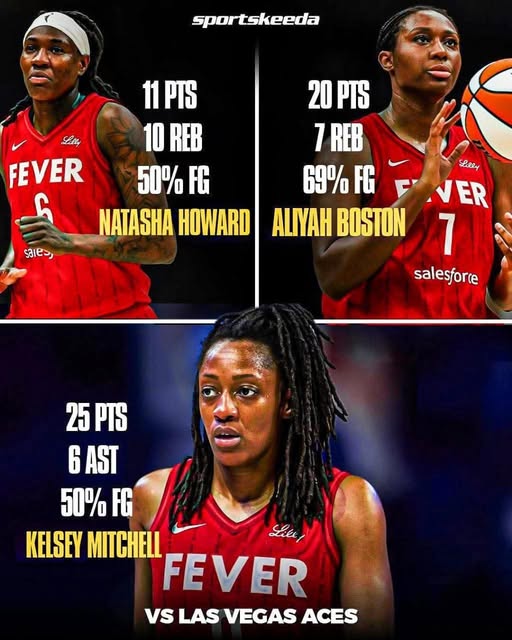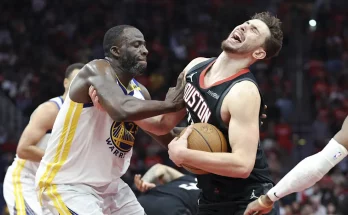From the moment Caitlin Clark limped off the floor mid‑game this season, liminal silence fell over Fever faithful. It was the inaugural season of the Caitlin Clark era, one that had seen her starring in triple‑doubles, launching logo threes, and single‑handedly drawing record crowds. Yet, with her sidelined by nagging left‑groin and quad strains for several stretches, one question began swirling through the league: could Indiana’s other stars rise in her absence?
The answer, as recent results would show, is a resounding yes. Without Clark, the Fever rolled off commanding wins over the Las Vegas Aces (81–54) and Minnesota Lynx (74–59) to claim the Commissioner’s Cup, posting a 5‑4 record in her absence—roughly equivalent to their 4‑4 mark when she’s on court. But what’s been truly eye‑opening isn’t just parity; it’s dominance. According to ESPN analyst Carolyn Peck, Indiana has become “more dangerous” without its rookie sensation—thanks to improved ball movement, tightened defense, and an ascent by both Kelsey Mitchell and Aliyah Boston .
Take the Aces rout: Kelsey Mitchell erupted for 25 points, shredding Las Vegas’s defense with a combination of catch‑and‑shoot accuracy and crafty penetrations . Boston anchored the interior, crashing boards aggressively, coercing contested shots, and blocking lanes. Role players like Aari McDonald, Natasha Howard, and Sophie Cunningham supplemented with key buckets, all while the Fever defense devoured transition opportunities and smothered communication.
That cohesion carried into the Commissioner’s Cup Final against the Lynx, a team boasting the league’s best regular‑season record. Natasha Howard sealed MVP honors—16 points, 12 rebounds—while Boston chipped in 12 points, 11 boards, and six assists. Mitchell and McDonald chipped in 12–13 points each, combining to snuff out Minnesota with a second-quarter surge and shutdown the paint in the final eight minutes .
Still, the elephant in the room remained Clark. Averaging 18.2 points and 8.9 assists per game despite her health setbacks, she sits among Rookie‑of‑the‑Year and All‑WNBA picks . When healthy, she’s a force: triple‑doubles, logo threes, record‑breaking night after night. Her sophomore year opened with a 20‑10‑10 triple‑double, and she has already set new WNBA benchmarks—most games with 25+ points and 10+ assists, fastest to 100 threes, and near-top in unassisted FG metrics .
Yet, with teammates like Mitchell averaging 19.3 points, and Boston starting at center, the balance has shifted intriguingly. In Clark’s absence, tempo speeds up and schemes adjust to team‑first symmetry rather than feed‑the‑star. Turnovers decrease. Deflections rise. The team is no longer a one‑girl show. And for the first time, opponents have started taking them seriously as a collective.
Still, every rose has its thorn. Critics point out that Clark remains the engine, especially when it comes to igniting crowds and generating national attention. The so‑called “Caitlin Effect” drives attendance up 105%, squeezes record‑breaking yield from TV and ticket revenues, promotes league‑wide interest, and spurs arena expansions .
Her absence coincides with dips in home attendance and ratings—substantial metrics, for sure. Moreover, she remains among the league’s top scorers and facilitators, consistently creating cold‑blooded scoring plays and appearing in MVP mid‑race ladders.
But that’s precisely the conundrum: in Clark’s absence, the team’s offense morphs, loosens. Who knew this unit could rotate the ball, switch defensively so effectively, and light up battle‑tested opponents with midrange touch, three‑point barrage, and interior punch? The “Big 3” narrative is arising: Clark may be the catalyst, but Mitchell and Boston are proving themselves indispensable co‑stars.
Mitchell’s transformation is seismic. Last year’s shooter has evolved into a multi‑faceted threat—not just catch‑and‑shoot boom, but a crafty penetrator into late clock, consistent catch‑and‑finish driver, and reliable pull‑up engine. Her WNBA All‑Star reserve candidacy rests on her 19.3 PPG average, but in the cups, she’s been explosive, particularly against Las Vegas. She strikes like a sniper.
Meanwhile, Boston, the Fever’s defensive timber, now hits the offensive glass with verve. She’s also an All‑Star starter, her sixth consecutive year. Her 12 points, 11 rebounds, and six assists in the Cup final reveal her growth as a distributor from the block—no longer restricted to paint presence but orchestrating crash boards into high‑IQ ball‑movement play .
And there’s chemistry. The trio has played as a natural extension of each other—two‑man sets, flange flares, stagger screens, pick‑and‑roll, pick‑and‑pop, secondary cutters. Their numbers align: Clark’s triple‑double nights often coincide with strong +/‑ plus differentials featuring Mitchell and Boston. In that CBSSports analysis, the trio pulled through even in defeat, working sequences almost instinctively before the bench stepped in .
There’s nuance, though. Clark’s unassisted FG percentage is among league leaders—56.5% of her threes and 87.5% of her twos are solo, suggesting the team still relies on her creation more than assist‑driven creation. But coach Stephanie White and Sue Bird have noted that adding Aari McDonald and refining rotations could free Clark to play off ball, easing the burden .
In fact, the Fever roster refresh this season—including DeWanna Bonner, Natasha Howard, Sydney Colson—was designed to bring veterans who stretch and close, teach habits, and lead in crunch time . The early returns suggest it’s working: Cup‑final MVP Natasha Howard, and McDonald’s plus‑minus, indicate that Clarkson is no longer the sole premiere output.
Anecdotally, even with Clark on the bench she is no passive participant. She claps furiously at teammate buckets; she stood to pay her coach’s technical foul; she cheered on the Court of The Cup Final with reflective pride . She remains the emotional leader and the spark plug, even when she isn’t able to play.
So what does this mean for the Fever’s future?
First, it creates dynamism. Opponents now have to game‑plan for a package rather than a person. Without Clark, there’s still firepower. With her, the support is insane.
Second, it reduces pressure. Before, the weight of expectation landed squarely on Clark’s shoulders. But as the Big 3 gel, she can rest more, recover, and play in bursts. That’s beneficial not just for player health, but for long‑term league viability.
Third, it positions Indiana as a contender in both short and long term. They can roll in Cup play, postseason, and regular season with flexibility. The presence of two All‑Stars outside Clark—Mitchell and Boston—and their elevated games open a window for deeper playoff runs.
There’s still a gap to close. Team defense peaks when they’re pressed; consistency by bench role players, polish in late game execution, and alignment on rotations—those remain key. That’s why Gregg Maloney’s criticism after losses to Atlanta noted how the supporting cast still needs to step up . The franchise is an evolution—not a finished product.
But recent wins are more than flashes—they’re a statement.
They say: We’re not just Caitlin Clark’s team. We’re Clark, Boston, Mitchell—and company.
The Fever’s identity is morphing into a three‑headed hydra. When Clark returns fully, the balance between her dominance and their collective firepower could push them from surprise Cup winners to genuine title contenders. The WNBA world senses it—the champs now have depth, wrinkle, and the superstar shining brighter when supported.
Ultimately, that’s a winnable formula: one transcendent young star, two top‑tier co‑stars, and a bench that buys in. The fever pitch in Indy isn’t centered solely on Clark—it’s centered on the rise of a trio that might just carry the franchise to new heights, all while Clark remains the face, fuel, and finale whenever she’s unleashed.


